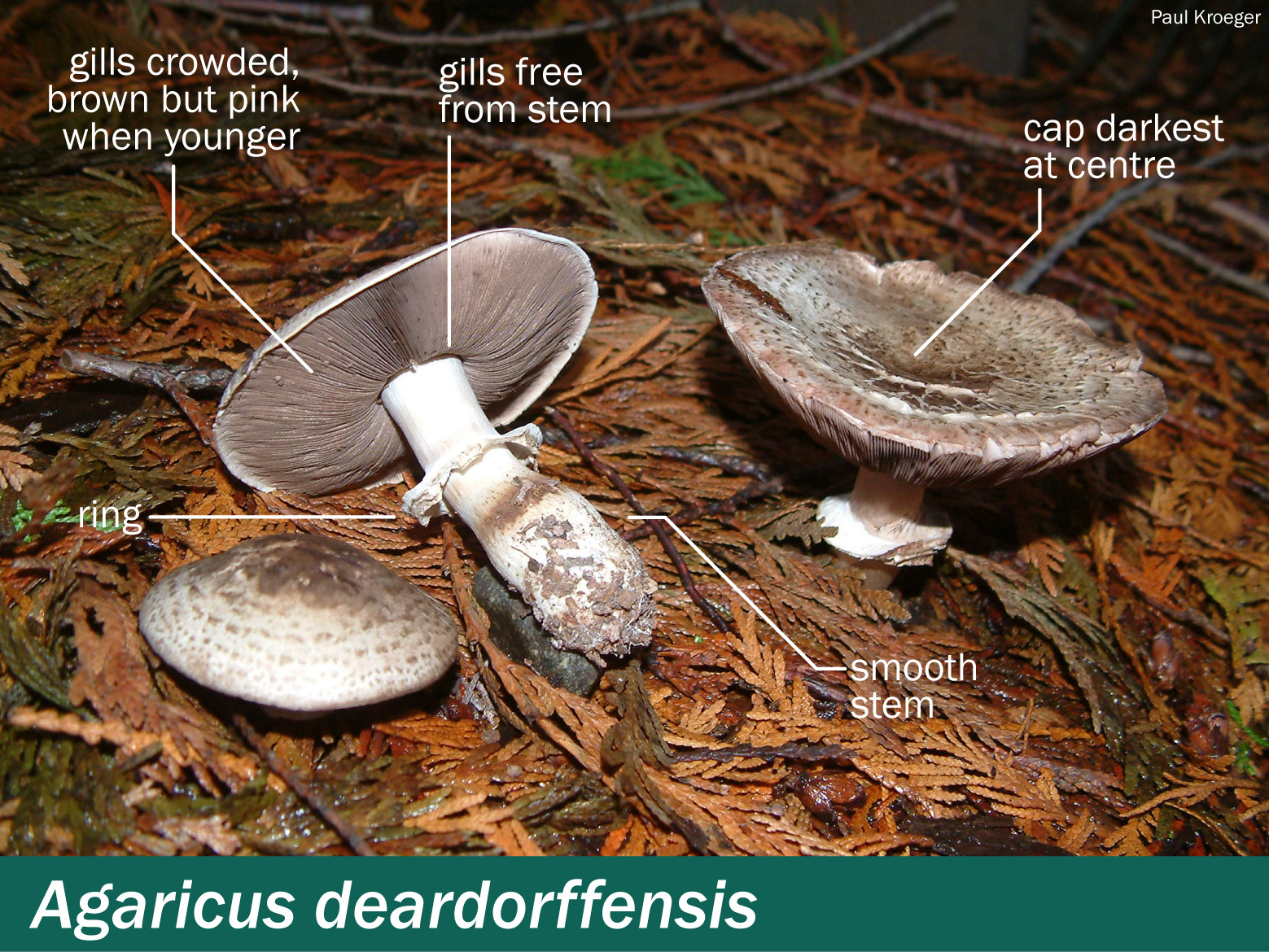Agaricus deardorffensis — California flat-top agaricus
Odour: Strongly like phenol or creosote.
Cap: 5–15 cm in diameter, broadly convex, becoming flat with age. The cap is covered by dark grey-brown to dark blackish brown radial streaks and tufts on a light background. The centre is darkest, and the cap margin is pale. When scratched, the margin turns bright yellow, which fades after a few minutes.
Gills: Free, crowded, pink at first, dark brown with age.
Stems: 11–15 cm long x 1.5–2 cm wide, smooth, cylindrical and sometimes wider at base. The colour is white, but changes to yellow when scratched. The stem is hollow.
Ring: White, rubbery, hanging, sometimes becoming loose from the stem.
Cup: None.
Spores: 5.0–5.5 x 3.5–4 µm, smooth and dark brown.
Habitat: On the ground, often along roads and paths, in open forests and in urban settings, in various mixed forests.
Geographic distribution: Widespread in western North America, from BC (Canada) in the north into California (coastal and montane). Newly described in 2016, this species is likely common although it is at present known from few BC and Pacific northwest collections.
Their smooth stems and phenolic odours distinguish poisonous members of Xanthodermatei from the edible Agaricus augustus (the prince), which is similar in size and habitat but which has a shaggy stem and almond odour.
Treatment: Contact your regional Poison Control Centre if you or someone you know is ill after eating California flat-top agaricus. Poison centres provide free, expert medical advice 24 hours a day, seven days a week. If possible, save the mushrooms or some of the leftover food containing the mushrooms to help confirm identification.
Poison Control:
British Columbia: 604-682-5050 or 1-800-567-8911.
United States (WA, OR, ID): 1-800-222-1222.
Symptoms usually resolve themselves in 24 hours.
Cases of poisoning: California flat-top agaricus specimens5,6 that were identified by DNA sequencing have been implicated in two cases of poisoning reported to the BC Centre for Disease Control Drug and Poison Information Centre.
- In one incident, a man cooked and ate mushrooms6 in fried rice and experienced diarrhoea ~7 hours later followed by a headache and nausea. He went to the hospital 18 hours after eating the mushroom, with vomiting and with continuing diarrhoea.
- The other patient had similar symptoms, and both patients recovered fully.

